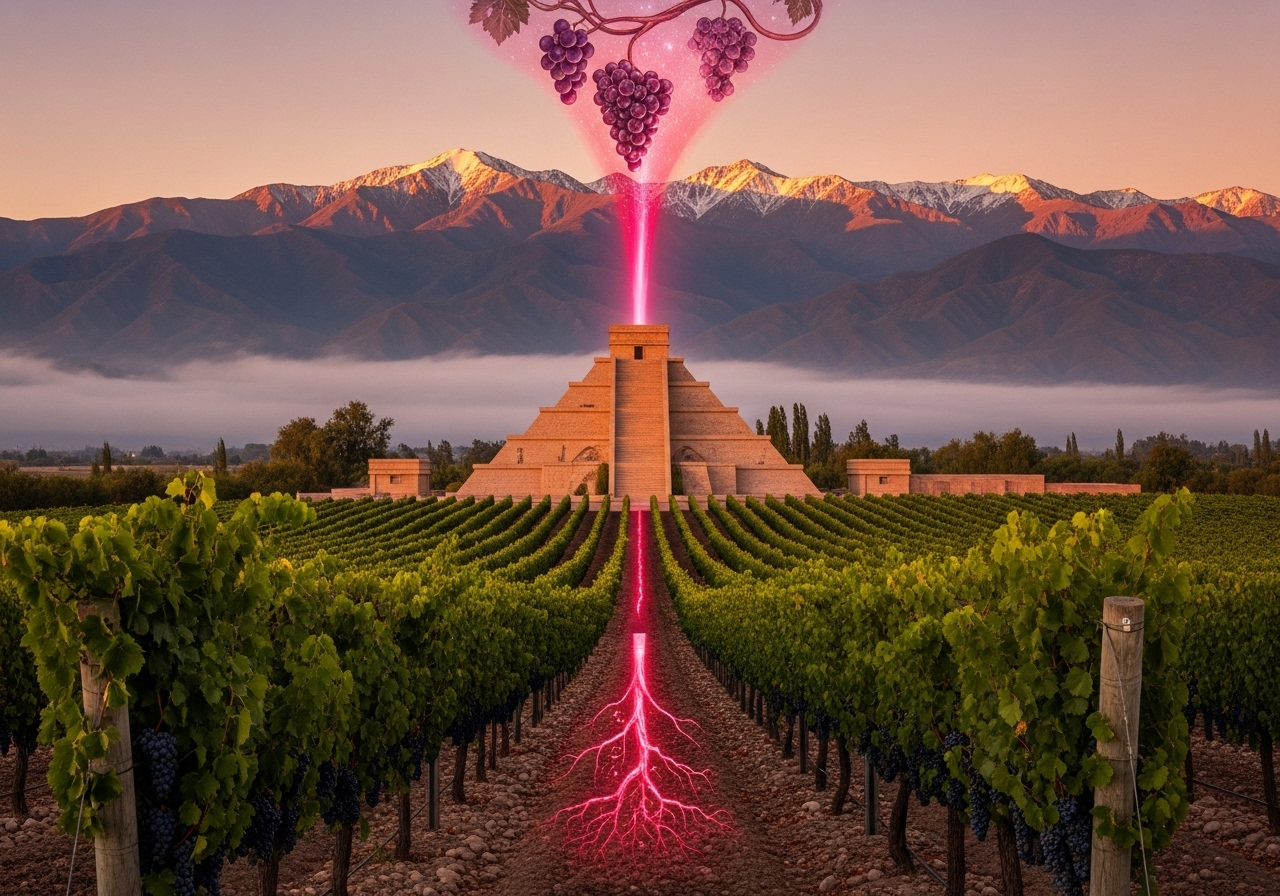Altura Immortalis: How Catena Zapata Raised Malbec to the Heavens
Explore the rise of Catena Zapata — the visionary family that transformed Argentine wine. From immigrant beginnings to high-altitude vineyards, they revived Malbec, blended science with tradition, and built a global icon at the foot of the Andes.

From immigrant roots to Andean summits — the dynasty that transformed Argentina’s wine into a global legend.
Origins: The Seeds of a New World Dream
Ah, Mendoza — a land where sunlight reigns supreme, where snowmelt from the Andes turns desert into paradise. I have watched mortals plant vines across many continents, but few dared as boldly, or dreamed as high, as Nicolás Catena Zapata.
But our tale begins before Nicolás — in 1898, when Nicola Catena, a young Italian immigrant from Marche, arrived in Argentina with little more than hope and vine cuttings in his pocket. Like so many who crossed the ocean in those days, he sought a better life. What he found instead was destiny.
He planted vines in Mendoza’s Maipú region, laying the foundations of a family legacy that would one day redefine South American wine. Through droughts and economic turmoil, the Catenas persisted. They grew grapes, bottled wine, built a business — and waited for the moment when Argentina itself would be ready to stand among the world’s great wine regions.
The Visionary: Nicolás Catena Zapata
That moment arrived in the 1960s and ’70s, when Nicolás Catena, grandson of Nicola, took the reins of the family winery. Educated in economics, Nicolás was more than a winemaker — he was a strategist, a visionary, a man who believed that Argentina’s wines could rival the best of France and Italy.
But in the mid-20th century, that belief was heresy. Argentina was known for bulk wine and domestic consumption, not fine wine. Its Malbec — a grape once celebrated in Bordeaux — had fallen from grace.
Nicolás saw not failure, but opportunity. And like all who dare to reshape fate, he started by questioning everything.
The Altitude Revolution: Reaching for the Sky
The key, Nicolás believed, lay in elevation. Inspired by the balance and complexity of Napa and Bordeaux wines, he asked a question that seemed absurd at the time: What if Argentina’s best wines could come not from the valley floor, but from the sky?
And so he began planting vineyards higher and higher into the Andes foothills. Many thought him mad — frost, thin air, harsh sun, unpredictable weather. But Nicolás understood something few did: that altitude is a sculptor, chiseling freshness, acidity, and structure into wine.
The results were nothing short of revolutionary. At elevations exceeding 1,500 meters (5,000 ft), the grapes ripened slowly, developing intense flavor while retaining vibrant acidity. Malbec — long forgotten in its French homeland — found new life in Mendoza’s mountain light.
By the 1990s, Catena Zapata was producing wines that could stand shoulder-to-shoulder with First Growth Bordeaux and Napa’s finest. The world took notice.
Adrianna Vineyard: The Grand Cru of the Andes
If Nicolás was the architect, the family’s crown jewel — the Adrianna Vineyard — was his masterpiece. Planted in 1992 at nearly 1,500 meters in the Gualtallary district of the Uco Valley, Adrianna became known as the “Grand Cru of South America.”
Here, extreme altitude and limestone soils create wines of unparalleled precision and power. Malbecs from Adrianna balance dense fruit with crystalline minerality. Chardonnays rival those of Burgundy, weaving chalk, citrus, and alpine freshness into a seamless whole.
Every row of vines here feels closer to the divine — as though the Andes themselves conspire to lift the grapes toward heaven.
The Scholar’s Touch: Laura Catena and the Modern Era
No legacy endures without evolution, and Catena Zapata’s next chapter is guided by Dr. Laura Catena, Nicolás’s daughter. A physician and scholar by training, Laura brought scientific rigor and global perspective to the family’s work.
Through Catena Institute of Wine, she has turned Mendoza into a living laboratory — studying soil microbiology, clonal selection, altitude physiology, and climate resilience. Her research has not only elevated Catena wines but reshaped Argentina’s entire viticultural landscape.
Today, the Catena name is synonymous with excellence. Wines like Catena Alta, Catena Zapata Malbec Argentino, and the iconic Nicolás Catena Zapata Cabernet blend are among the most sought-after in the world.
Architecture and Art: A Temple to Wine
Even the winery itself is a declaration of grandeur. The Catena Zapata pyramid, inspired by Mayan temples, rises from the vineyards like a monument to time, tradition, and transformation. It is not a building — it is a statement: wine is civilization.
Inside, rows of barrels slumber beneath vaulted ceilings, and sunlight filters through stone corridors like the passage of centuries. Visitors walk not through a cellar, but through a story — one written in earth and altitude, science and myth.
Liber’s Reflection: Where Heaven Meets the Vine
I, Liber, have seen wine born in monasteries, palaces, and desert plains — but few places embody the spirit of ascension quite like Catena Zapata. It is wine not just made, but elevated — in altitude, in ambition, in soul.
The Catenas understood that greatness is not found in following tradition, but in transcending it. They saw in Malbec not a relic, but a phoenix. They believed that vines could climb toward the heavens — and they were right.
To drink a glass of Catena Zapata is to taste sunlight thinned by altitude, soil carved by glaciers, and a family’s relentless pursuit of perfection. It is to taste history rewritten — not by conquest, but by conviction.
And so I raise my chalice, high as the Andes, to the house that turned Argentina’s earth into the language of the stars. 🍷⛰️





